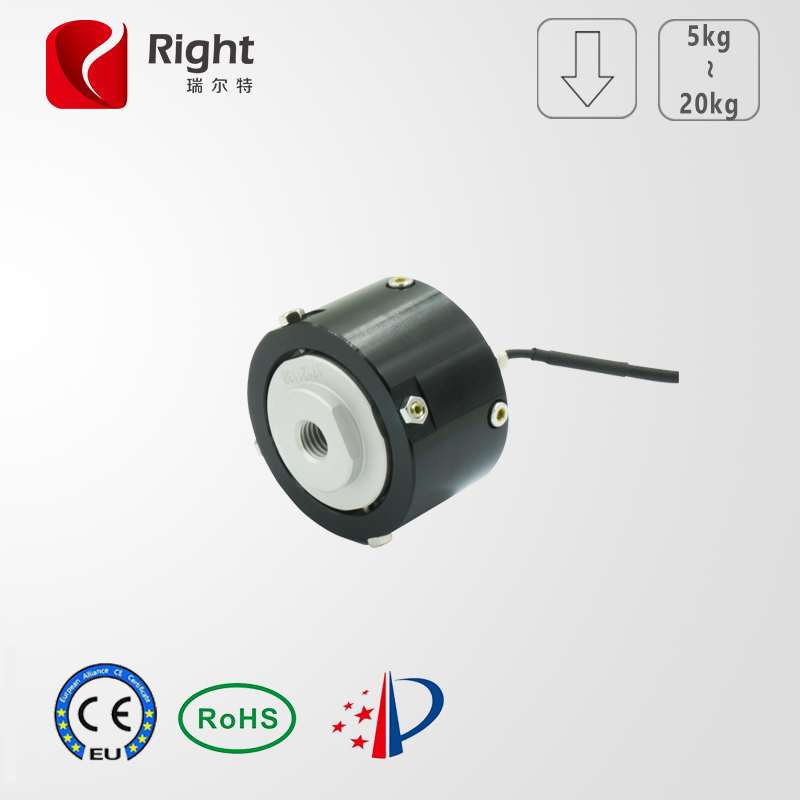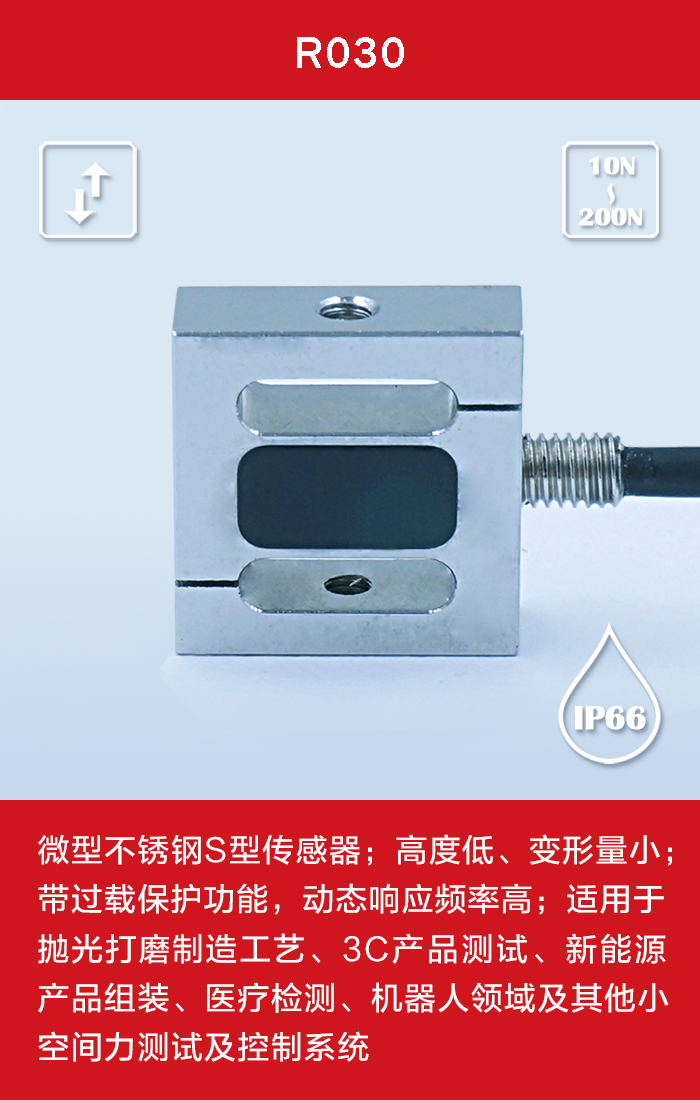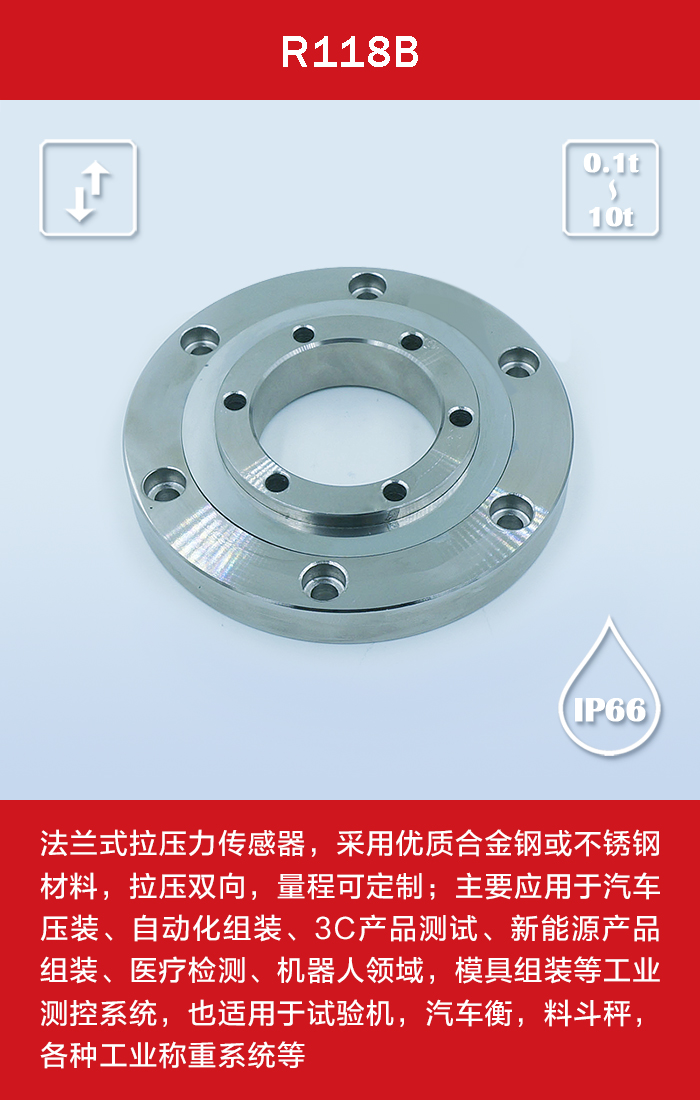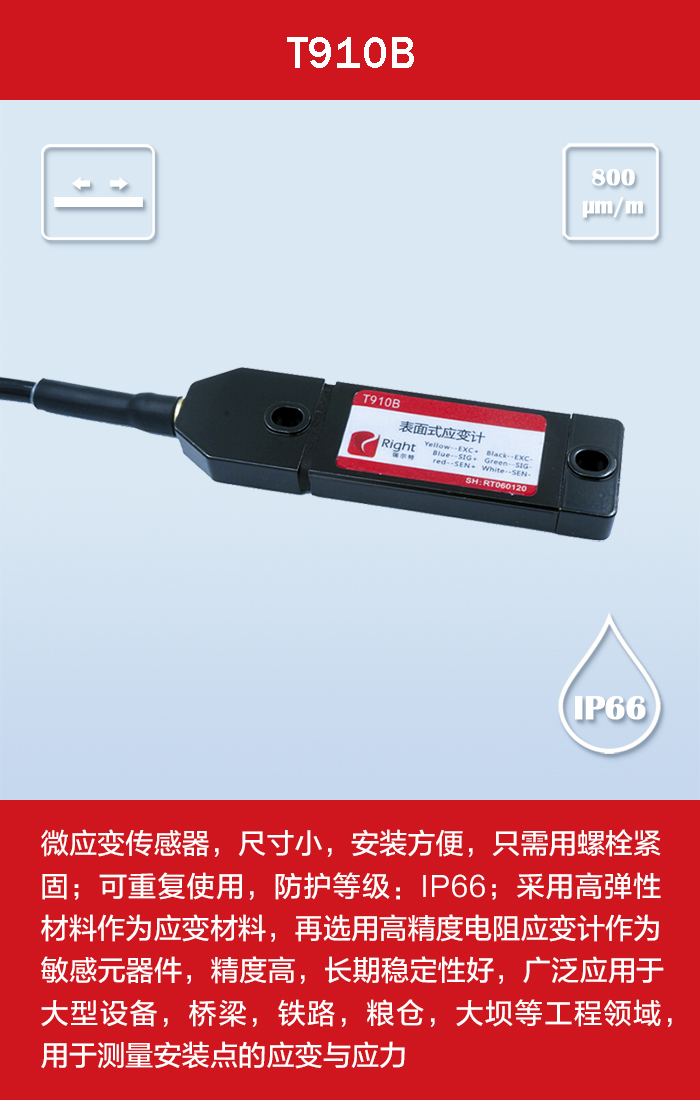NEWS
Focus on Right, share the wonderful moments of enterprises and exhibitions, popularize product technical knowledge, and answer frequently asked questions
News Center
A method of making a strain gauge thread preload sensor
- Categories:Technical knowledge
- Time of issue:2021-09-23 12:37
(Summary description) The utility model relates to the technical field of sensors, in particular a strain gauge thread preload sensor. In most cases, uneven or insufficient bolt loading is the cause of bolt locking function failure and loosening, which can lead to accidents such as loosening of structural parts and leakage. The common method used in the current bolt assembly process is to overload the gasket and use the rebound deformation of the gasket to compensate for subsequent bolt slack, thus preventing loosening of the mechanism parts, and to reinforce the threaded coupling with thread adhesive. However, over time, fatigue, corrosion and weathering of the gasket can cause a reduction in the preload of the bolt, resulting in a loss of locking function. The load on the bolt changes constantly during operation of the equipment, which may lead to fatigue fracture of the bolt, or loss of thread glue and loosening of the threads. For example, in important (steel) structures, such as differential wind turbines, the highly loaded bolts need to be inspected and retightened, which is very expensive and even needs to be replaced periodically.
A method of making a strain gauge thread preload sensor
(Summary description) The utility model relates to the technical field of sensors, in particular a strain gauge thread preload sensor. In most cases, uneven or insufficient bolt loading is the cause of bolt locking function failure and loosening, which can lead to accidents such as loosening of structural parts and leakage. The common method used in the current bolt assembly process is to overload the gasket and use the rebound deformation of the gasket to compensate for subsequent bolt slack, thus preventing loosening of the mechanism parts, and to reinforce the threaded coupling with thread adhesive. However, over time, fatigue, corrosion and weathering of the gasket can cause a reduction in the preload of the bolt, resulting in a loss of locking function. The load on the bolt changes constantly during operation of the equipment, which may lead to fatigue fracture of the bolt, or loss of thread glue and loosening of the threads. For example, in important (steel) structures, such as differential wind turbines, the highly loaded bolts need to be inspected and retightened, which is very expensive and even needs to be replaced periodically.
- Categories:Technical knowledge
- Time of issue:2021-09-23 12:37
- Views:
The utility model relates to the technical field of sensors, in particular a strain gauge thread preload sensor. In most cases, uneven or insufficient bolt loading is the cause of bolt locking function failure and loosening, which can lead to accidents such as loosening of structural parts and leakage. The common method used in the current bolt assembly process is to overload the gasket and use the rebound deformation of the gasket to compensate for subsequent bolt slack, thus preventing loosening of the mechanism parts, and to reinforce the threaded coupling with thread adhesive. However, over time, fatigue, corrosion and weathering of the gasket can cause a reduction in the preload of the bolt, resulting in a loss of locking function. The load on the bolt changes constantly during operation of the equipment, which may lead to fatigue fracture of the bolt, or loss of thread glue and loosening of the threads. For example, in important (steel) structures, such as differential wind turbines, the highly loaded bolts need to be inspected and retightened, which is very expensive and even needs to be replaced periodically.
In response to the above technical shortcomings, the purpose of the utility model is to provide a strain gauge thread preload sensor that can be used as a shim for a long period of time, can directly monitor the preload force when locking the bolts, and can monitor the dynamic and static preload force changes of the equipment in real time. In order to solve the above technical problems, the utility model uses the following technical solutions: the utility model provides a strain gauge thread preload sensor, including an annular elastomer, one end of the annular elastomer is provided with a raised flange, the connection between the flange and the elastomer is provided with a second annular groove, and the surface of the elastomer away from the flange is provided with a first annular groove; the first annular groove of the thread preload sensor is provided with a plurality of strain gauges uniformly distributed along the circumference; and The strain gauges are attached to the inner circumference of the first annular slot. The number of strain gauges is eight, eight in series of two. The vertical distance between the outer and inner circumferential walls of the second annular slot of the threaded preload sensor and the axis of the elastomer decreases in the direction close to the first annular slot; the bottom of the second annular slot of the threaded preload sensor has a rounded surface. Two threaded holes are provided symmetrically on both sides of the threaded hole; the threaded hole of the threaded preload sensor extends into the first annular groove and is connected to the first annular groove; the threaded hole of the threaded preload sensor is a blind hole. The threaded preload sensor elastomer is also provided with a cover plate on the surface away from the flange.
The advantages of the utility model are that the sensor can be placed between the bolt and the mechanism as a spacer, allowing real-time confirmation of the preload force during bolt tightening and monitoring of dynamic and static preload force changes in later equipment; where eight strain gauges are connected in series and two strain gauges in series are connected with a bridge to form exactly the four strains required for a Wheatstone bridge. In addition, the first and second annular grooves interact with each other during the bolt preload, increasing the strain and improving the sensing effect of the strain gauges.
Scan the QR code to read on your phone
- Related Reading
Follow us for more information
-
 【 Official WeChat 】
【 Official WeChat 】
-
 【 Mobile Website 】
【 Mobile Website 】
Tel: 400-8067-299
- Service Hotline 400-8067-299
- Service Mailbox right@ritcl.com
- Pre-sales Advice 189 2107 0677
 Follow Right
Follow Right







